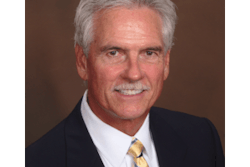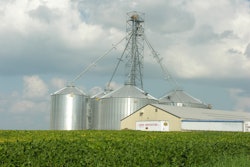Nicknamed "America's Finest City" San Diego proved to be a beautiful and welcoming destination for the National Grain and Feed Association's 115th Annual Convention. More than 700 attendees descended upon Hotel del Coronado March 13 to 15 for networking opportunities, educational open forums and committee meetings.
The keynote address was presented by Greg Page, chairman and CEO of Cargill Inc. Page's presentation "Finding The New Center of Gravity With Policy" explored unprecedented market volatility and its causes. Increased global consumption, rising fuel costs, inclement weather and government and export restrictions are among its many drivers. He also noted sizing the inelastic demand with supply remains at the mercy of weather. Unfortunately price volatility falls hardest on the poorest consumers.
The Q&A portion of the session turned toward issues of Cargill's public perception. Page urged the industry to avoid allowing consumers the opportunity to jump to jump to conclusions about agriculture. The company recently invited Oprah into one of its meat plant to clear up misconceptions and help educate about the animal agriculture.
"In a world where nothing can be hidden, its better to have nothing to hide," says Page. "Take a step of faith to invite the community into your business."
The current state of ag lending
融资和资本可用性”成了一个pa的特色nel of financial stakeholders and explored the increased demands of grain costs, increased volume and liquidity. With 61 bankers at the conference this session proved a timely open forum for all attendees. Doug Stark, president and CEO of Farm Credit Services of America, feels the current state of agriculture is a perfect storm, but in a good way. The combination of low interest rates, federal policy, liquidity and high trade with a weak dollar creates an environment that is about as good as it gets for producers; however, he notes that volatility and capital requirement changes could shift this and leave producers without a safety net. Lenders can't rely on the "good old boy report", but a firm understanding of the marketing position will allow them to fund fast and move forward.
"The most frequently asked question: How much will you lend?" described Bob Egerton, eastern regional president of CoBank. "The answer: There isn't one. Every situation is unique."
Egerton suggested the industry move to an asset based lending approach. He made the correlation between grain and lending, seeing that both industries deal in undifferentiated commodities, risk management and uncertainty.
"When looking for a financial partner look for expertise, responsibility and capacity," Egerton said.
Picking up on this point, senior vice president of US Bank Elizabeth Hund's presentation focused on the questions grain handlers and feed manufacturers should ask their bankers. Do they have the capacity to support your business?
"Would you invest all your money in one stock? No. Then why would you only work with one bank?" Hund says. "As we've learned, there is no such thing as too big to fail. Understand the financial strength and capacity of the banks you're working with."
She suggests working with multiple banks in a way that forces them to offer competitive rates. To do this, borrowers must be proactive not reactive when seeking to borrow money. "If you don't, you're putting all the power in the banks hands, and you won't be able to negotiate."
Mike Stewart, partner at Faegre & Benson, presented "War Stories: Challenges Arising From Commodity Price Volatility in the Agribusiness Economy" covering litigation case studies spanning in agribusiness from the ethanol industry to producer issues.
Issues affecting ag
"Agriculture is a lynch pin for the economy and global stability," said Hal Reed, NGFA chairman and president of The Andersons Inc. He noted that agriculture represents 11% of U.S. employment. Given the role ag plays, the challenges it faces are broad. From regulation to rail rates, the Annual Convention's speakers address many topics. Here are a few highlights:
丹尼斯·艾弗里,哈德逊研究所的高级研究员e, made the case for agriculture in his session, "Climate Change: Impacts on Crop Production and Sustainability." He explained how biotechnology and industrial agriculture are not contributing factors to global warming, but actually help defend against it.
Melissa Bailey, managing partner, Ogletree, Deakins, Nash, Smoak & Stewart P.C., presentation "OSHA — The New Risk Factor for Grain, Feed and Processing Facility Managers" highlighted the administration’s "new sheriff" approach to regulation, specifically as it relates to grain handlers. Bailey explained the Injury and Illness Prevention Program (I2P2) is OSHA's No. 1 priority. I2P2 suggests employers should be able to identify potential risks and address them prior to an incident, and is thereby be held in violation of the standard.
"With this sort of Monday morning quarterbacking, OSHA would never have to issue another standard," Bailey says.
The Sweep Auger Letter of Interpretation continues to challenge the industry, but Bailey suggested companies be proactive during inspections or they won't get the results they want.
"Do you have a plan in place to deal with OSHA in the event of an accident? Do you know your rights during inspection?" she asks. "It's too late if you wait until they show up."
Since settling admits guilt and sets the precedent for future repeat violations, until results are in from federal litigation for pending sweep auger violations, the industry will wait for direction as to how to proceed.
Rail industry faces challenges of its own
BNSF Railway chairman and CEO Matt Rose discussed "Rail Transportation - Outlook and Policy" predicts a bright future for the relationship between the feed and grain industry and rail, noting increased exports and a stable demand for ethanol production as contributing factors.
"We want to be good stewards to the grain industry," Rose said, noting the significant capital investments made by railways to meet the growing capacity demands of its customers. One hurdle in making addition investments is the Positive Train Control (PTC) Mandate that will cost the carrier $10 billion to install this collision and derail prevention overlay system. All main line and Class 1 railroads be in compliance by 2015. This hit is likely to affect shipper's rates as costs must be off-set somewhere so rail investment can continue to progress. Rose noted that to meet the demands of a growing population, the railroad should annually be investing billions more to build the infrastructure necessary to support the economy of the future.
Daniel R. Elliot III, chairman of the Surface Transportation Board, hopes the Surface Transportation Board will be seen as a fair entity and aims to resolve rate disputes through mediation before they escalate. In the coming year, the board plans to examine and update rules and procedures.
For more information on NGFA policies or the 2012 Annual Convention to be held in Charleston, SC, visit www.NGFA.org.





















